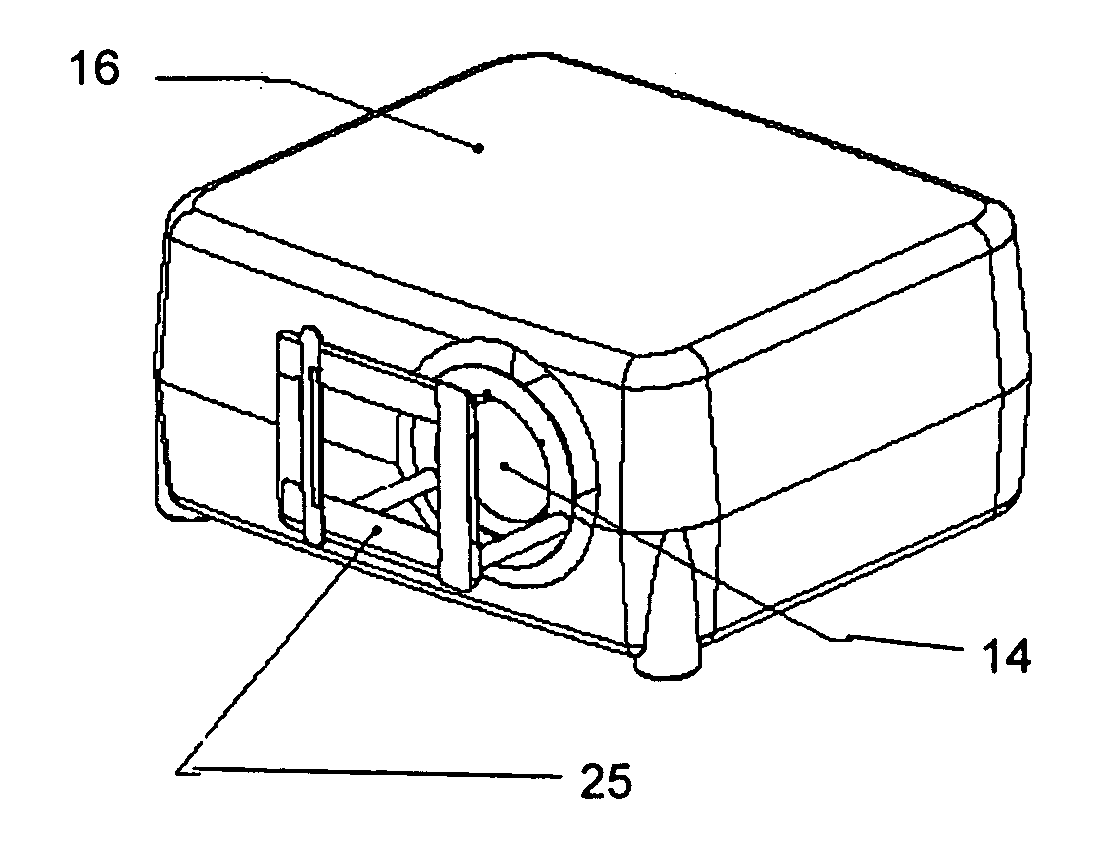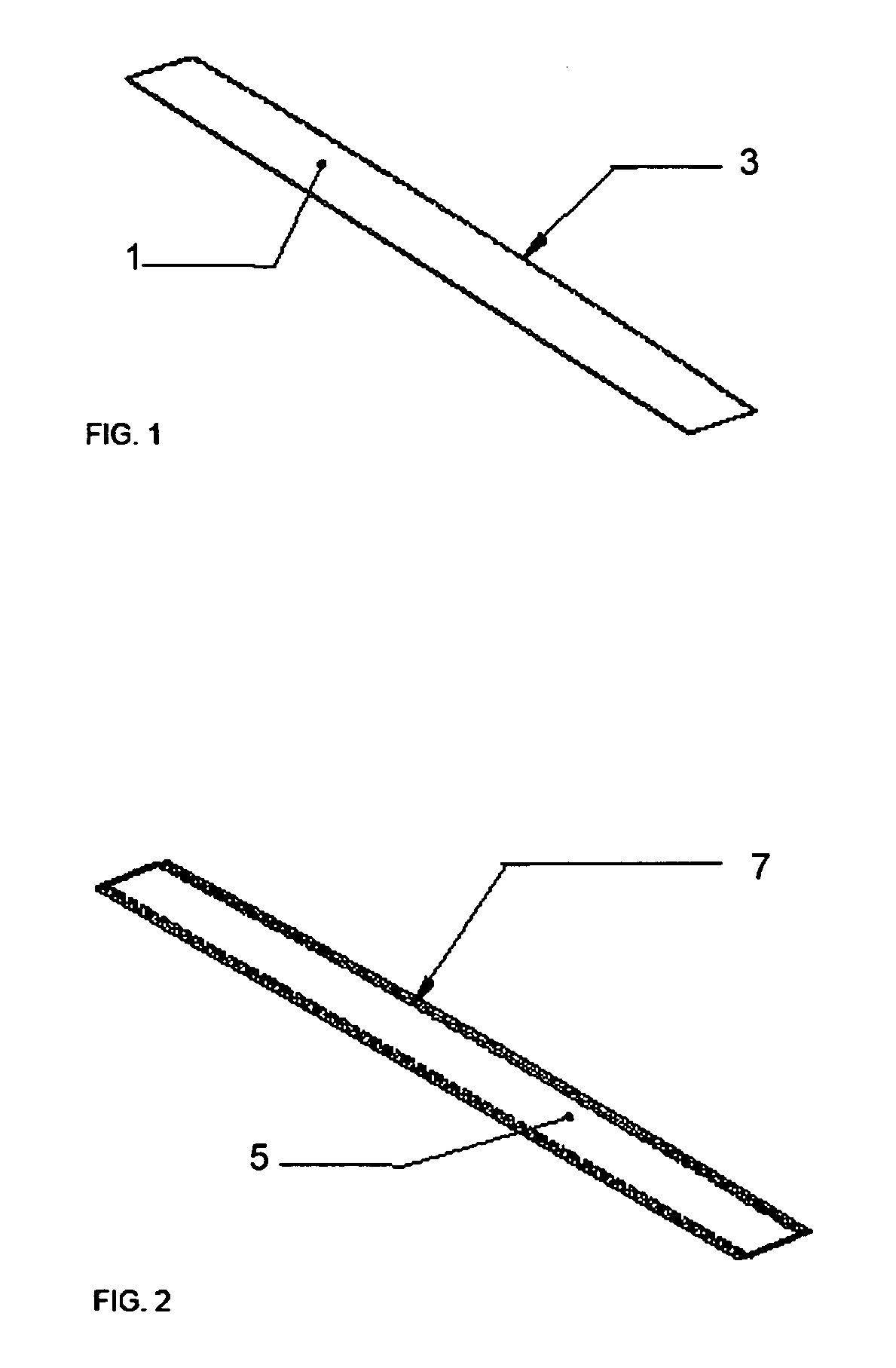Opto-mechanical filter for blending of images from a digital projector
a digital projector and filter technology, applied in the field of projection systems, can solve the problems of not working as well as the light valve lcd or dmd/dlp type micromirror projectors, image often not appearing, objectionable artifacts, etc., and achieve the effect of no tool adjustment, unlimited flexibility, and constant distance from the lens
- Summary
- Abstract
- Description
- Claims
- Application Information
AI Technical Summary
Benefits of technology
Problems solved by technology
Method used
Image
Examples
Embodiment Construction
[0026] With reference to FIG. 1, a generally rectangular filter component 1 is shown cut from a commercial transparent polymer (polycarbonate or polyester) film impregnated or coated with a neutral density (ND) color dye, such as described in U.S. Pat. No. 6,531,230 (Weber et al). As is known in the art, one of the longer edges of the filter component is profiled to conform to the shape of the edge of the image as it exits the projection lens of a projector. Typically, the profile follows the shape of a shallow curve 3.
[0027] In FIG. 2, a graduated filter 5 is shown made from layers of cut film filter components of FIG. 1, wherein the curved edges are offset, as indicated by reference numeral 7, to create a ‘stepped’ graduation of the density of the color dye. The width of the cut filter components and graduated stepped offsets may be varied to best conform to the width of the image area to be blended. Also, the number of layers of cut filter components can be varied (three layers ...
PUM
 Login to View More
Login to View More Abstract
Description
Claims
Application Information
 Login to View More
Login to View More - R&D
- Intellectual Property
- Life Sciences
- Materials
- Tech Scout
- Unparalleled Data Quality
- Higher Quality Content
- 60% Fewer Hallucinations
Browse by: Latest US Patents, China's latest patents, Technical Efficacy Thesaurus, Application Domain, Technology Topic, Popular Technical Reports.
© 2025 PatSnap. All rights reserved.Legal|Privacy policy|Modern Slavery Act Transparency Statement|Sitemap|About US| Contact US: help@patsnap.com



